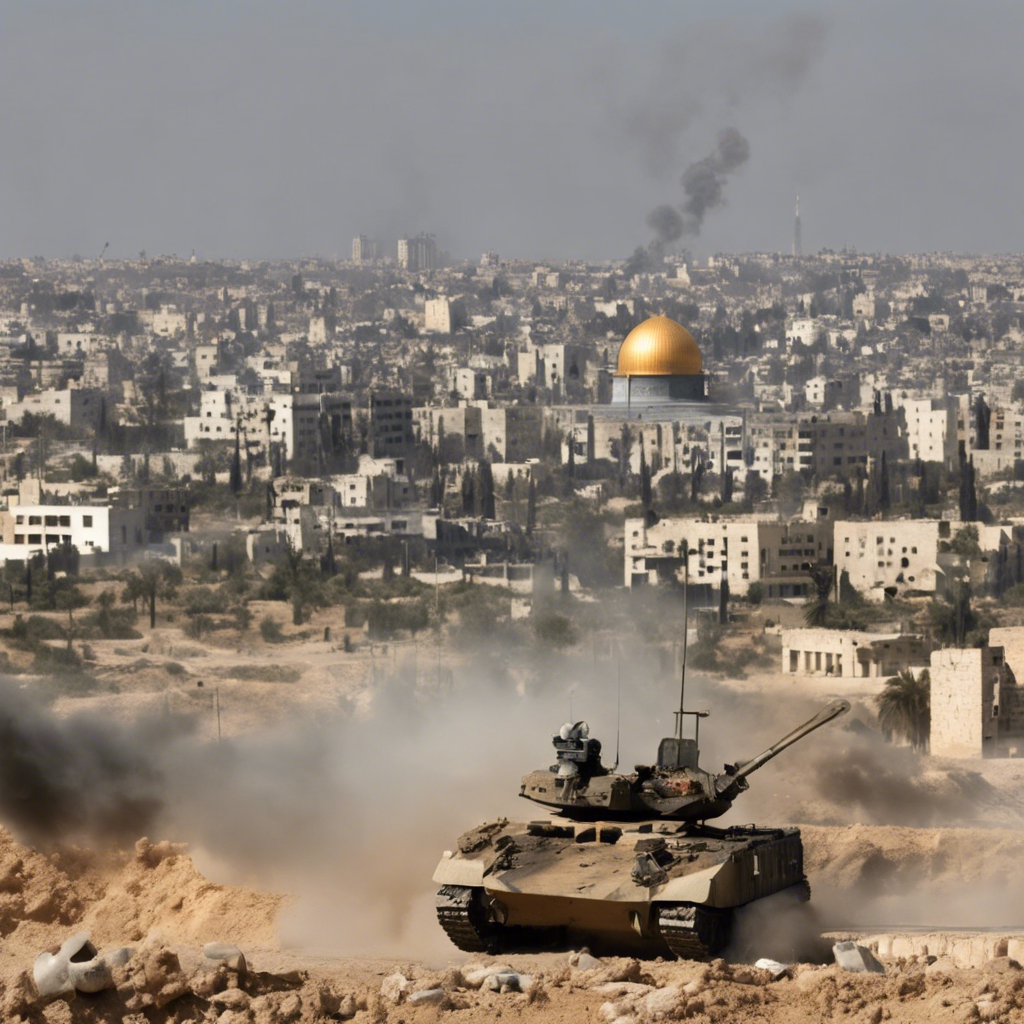Israel-Gaza War: A Comprehensive Analysis of the Conflict

Retaliatory Strikes and Rising Death Toll: The Latest Developments in the Israel-Gaza War
The Israel-Gaza war has been escalating with each passing day, leaving a trail of destruction and loss of life. In the latest developments, the United States has carried out retaliatory strikes against Iran-backed militia groups in Iraq, while the death toll in the Gaza Strip has surpassed 20,000, according to the Gaza Health Ministry. This article aims to provide a comprehensive analysis of the conflict, exploring the historical context, recent attacks, and the humanitarian crisis unfolding in the region.
The Oct. 7 Attack and Hamas’ Exploitation of Vulnerabilities
Hamas, the militant group controlling the Gaza Strip, meticulously planned its assault on Israel for over a year. A video analysis by The Washington Post reveals how Hamas exploited vulnerabilities in Israel’s reliance on technology at the “Iron Wall,” the security barrier around the Gaza Strip. This attack, considered the deadliest in Israel’s history, exposed the weaknesses in Israel’s defense system and sent shockwaves throughout the region. Additionally, a recent study found that stock traders earned millions of dollars by anticipating the Oct. 7 Hamas attack, raising questions about insider trading and the ethics surrounding such investments.
Retaliatory Strikes and the Involvement of Iran-backed Militia Groups
In response to the escalating violence, the United States carried out retaliatory strikes against Iran-backed militia groups in Iraq, including Kataib Hezbollah. The move was aimed at deterring further attacks and sending a strong message to those supporting Hamas. The involvement of Iran-backed groups in the conflict adds another layer of complexity to an already volatile situation, raising concerns about the potential for further escalation and regional destabilization.
The Humanitarian Crisis in the Gaza Strip
The ongoing conflict has resulted in a dire humanitarian crisis in the Gaza Strip. With the death toll surpassing 20,000, according to the Gaza Health Ministry, the civilian population is bearing the brunt of the violence. Infrastructure has been decimated, leaving thousands without access to basic necessities such as clean water, electricity, and healthcare. International aid organizations are struggling to provide assistance to those in need, further exacerbating the suffering of the people in the region. The release of more than 100 hostages held in the Gaza Strip by Hamas offers a glimmer of hope, but the long-term ramifications of the conflict on the civilian population cannot be ignored.
The Complicated History of the Israeli-Palestinian Conflict
To fully understand the Israel-Gaza war, it is essential to delve into the complicated history of the Israeli-Palestinian conflict. Decades of political, territorial, and religious disputes have fueled tensions between Israel and the Palestinian territories. The Gaza Strip, under the control of Hamas, has been a focal point of the conflict, with its residents caught in the crossfire. Exploring the historical context provides valuable insights into the root causes of the ongoing conflict and the challenges faced in achieving a lasting peace.
Conclusion:
The Israel-Gaza war continues to escalate, with retaliatory strikes, rising death tolls, and a worsening humanitarian crisis. The recent Oct. 7 attack by Hamas exposed vulnerabilities in Israel’s defense system, while the involvement of Iran-backed militia groups adds another layer of complexity to the conflict. The suffering of the civilian population in the Gaza Strip cannot be overlooked, as they bear the brunt of the violence and endure a dire humanitarian crisis. Understanding the complicated history of the Israeli-Palestinian conflict is crucial in finding a path towards a lasting peace. As the world watches the situation unfold, the need for international intervention and a renewed commitment to diplomacy becomes increasingly urgent.

